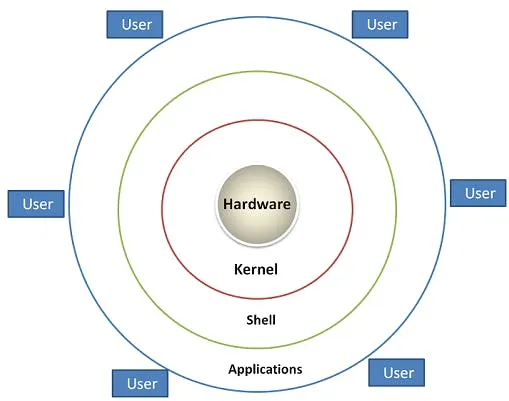
1. Hardware
- Physical components: CPU, RAM, storage, network devices, etc.
- Linux supports multiple architectures (x86, ARM, RISC-V, etc.).
2. Kernel (Core of Linux)
- Monolithic kernel handling:
- Process management (scheduling, multitasking)
- Memory management (RAM, virtual memory)
- Device drivers (communication with hardware)
- File systems (ext4, Btrfs, XFS, etc.)
- Networking (TCP/IP stack, firewalls)
- Loadable kernel modules (drivers can be added/removed dynamically).
3. Shell (Command Interpreter)
- Acts as a bridge between users and the kernel.
- Common shells: Bash (Bourne Again Shell), Zsh, Fish.
- Accepts commands, executes programs, and returns output.
4. Applications (User Space)
- End-user software (e.g., web browsers, text editors, servers).
- Can be CLI-based (like
vim, grep) or GUI-based (like Firefox, LibreOffice).
- Relies on system libraries (e.g.,
glibc, GTK, Qt) for functionality.
